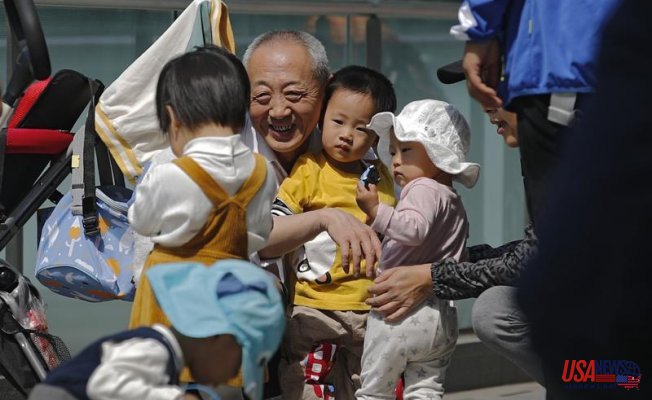The ruling party has imposed birth limitations since 1980 to control population growth but concerns the amount of working-age individuals is falling too quickly while the talk above age 65 is climbing. That threatens to interrupt its aspirations to change China into a booming consumer society and worldwide technology leader.
It said leaders consented"implementing the coverage of a single couple could have three kids and encouraging measures are conducive to enhancing China's population structure."
Critics agreed China should increase its retirement age to keep more people in the workforce and enhance retirement and health providers for the older, Xinhua said.
Restrictions that restricted most couples to one child were eased in 2015 to let two, but the entire number of births dropped further, indicating rule changes in their own have very little effect on the tendency.
Couples say they're set off by high expenses of raising a kid, disruption for their tasks and the requirement to care for elderly parents.
"Every phase of the issue has not been solved," said a post on the favorite Sina Weibo site service accepted Tchaikovsky. "Who'll raise the infant? Have you got time? I head out early and return . Children do not understand exactly what their parents look like"
Our generation will not live long."
China, together with Thailand and other Asian markets, faces exactly what economists predict the challenge of if they can get rich before they become old.
The Chinese people of 1.4 billion was expected to peak later this decade and begin to decline. Census data published May 11 imply that's occurring faster than anticipated, adding to burdens on underfunded pension and health systems and cutting down the amount of prospective employees available to support an increasing retiree group.
The talk of working-age people 15 to 59 from the population fell to 63.3percent this past year from 70.1percent a decade before. The group aged 65 and older climbed to 13.5percent from 8.9 percent.
The 12 million hens reported this past year was down almost one-fifth from 2019.
Approximately 40 percent were next kids, down from 50 percent in 2017, based on Ning Jizhe, an data official who declared the information on May 11.
Chinese researchers along with the Labor Ministry state the talk of working-age individuals could fall into half of the people by 2050. That raises the"dependency ratio," and also the amount of couples that rely on every employee to create earnings for retirement funds and also to pay taxes for health and other public services.
Experts at Monday's meeting agreed it's"necessary to implement the slow postponement of the retirement age," Xinhua said.
The prospective shift is fraught. Some female practitioners welcome a opportunity to keep in fulfilling careers, but other people whose bodies have been worn out from years of manual labour resent being required to work more.
Demographers say official arrival limitations hidden what could have been a further drop in the amount of kids per family with no constraints.
The ruling party says it avoided as many as 400 million possible births, preventing shortages of water and food. However, demographers say if China adopted trends in Thailand, parts of India and other nations, the amount of additional infants could have been as low as a couple million.













